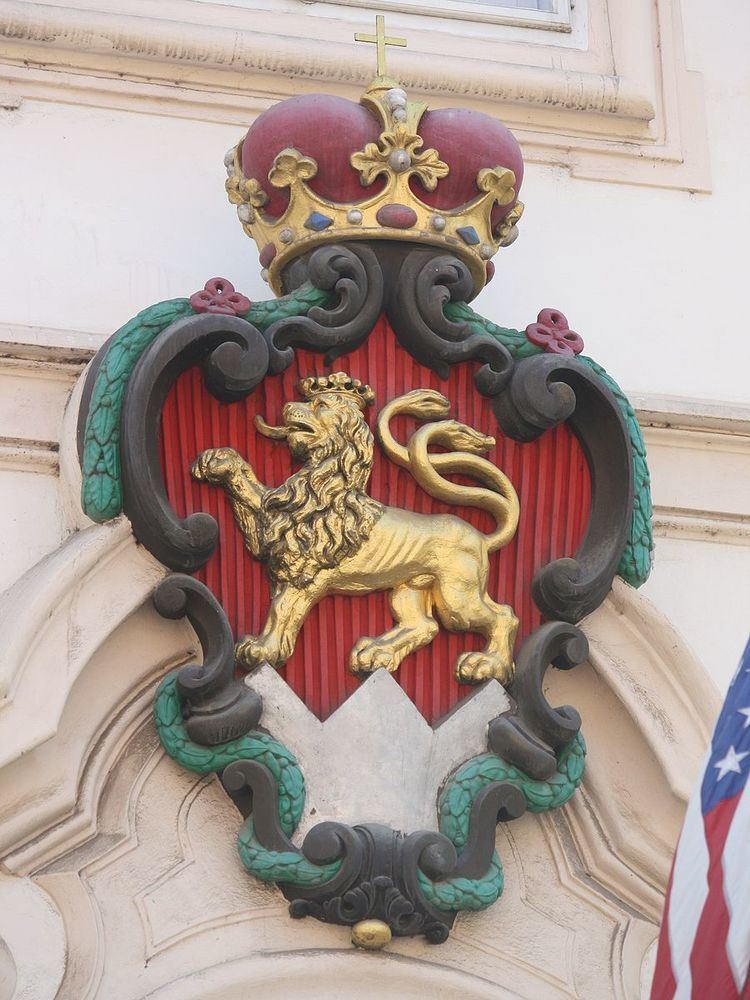 | ||
Schönborn is a noble and mediatised former sovereign princely family from the former Holy Roman Empire. Several members of the family have held high offices of the Roman Catholic Church and the Holy Roman Empire over the course of centuries, including as Bishops, Prince-Bishops, Cardinals and Prince-Electors. In addition to several family members having been elected monarchs of ecclesiastical principalities—the Electorate of Mainz, the Prince-Bishopric of Würzburg, the Prince-Bishopric of Worms, the Prince-Bishopric of Speyer, the Electorate of Trier, and the Prince-Bishopric of Bamberg—the family possessed a fiefdom in Franconia that held imperial immediacy, and was thus a principality of the Holy Roman Empire, the state of Schönborn.
Contents
History
Schönborn appeared first in the County of Katzenelnbogen in 1373 when Gilbrecht of Schönborn, a vassal, served Eberhard V of Katzenelnbogen. Later it was a German statelet ruled by the Schönborn family located in Franconia and areas at the Main River in Germany, located to the south of Bamberg and to the southeast of Würzburg.
The Schönborn family, originally from Schönborn, Rhein-Lahn, owned several fiefs in Southern Hesse. In 1661, Philipp Erwein, Baron von Schönborn (1607–1668), of Freienfels Castle near Weinbach, since 1654 also owner of Geisenheim, the only brother of Elector-Archbishop Johann Philipp von Schönborn, purchased the Herrschaft (territory) of Heusenstamm and built a new castle. In 1671 his son Melchior (1644–1717), brother of Elector-Archbishop Lothar Franz von Schönborn, acquired the fief of Reichelsburg. His son Rudolf Franz (1677–1754) married Eleonore von Hatzfeld in 1701, widow of the Count von Dernbach, who had left her the Herrschaft Wiesentheid in Franconia, which was a small Imperial State and raised to a County in 1701. She also inherited the Austrian fiefs of Arnfels and Waldenstein in Carinthia from her first husband. Her father-in-law Melchior then bought some further estates in Austria in 1710, Göllersdorf with Mühlberg and Aspersdorf in Lower Austria, from the (then extinct) Counts of Buchheim. In 1717, his estate was partitioned into the states of Schönborn-Wiesentheid and Schönborn-Heusenstamm. Heusenstamm was inherited by Schönborn-Wiesentheid in 1801. The state of Schönborn-Wiesentheid was mediatised in 1806; the family thus retained its princely rank.
In 1726, Charles VI, Holy Roman Emperor, granted Palanok Castle with Mukacheve, Chynadiyovo and 200 villages in the Kingdom of Hungary (today part of the Ukraine) to Elector Lothar Franz who had elected and crowned him and was one of his main political supporters within the Empire. The estate, one of the largest in Eastern Europe, remained in the family well into the 20th century.
